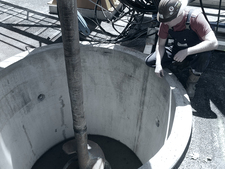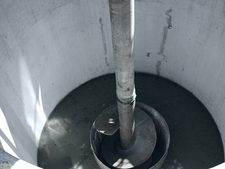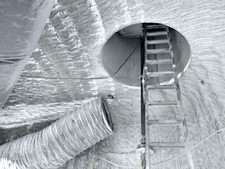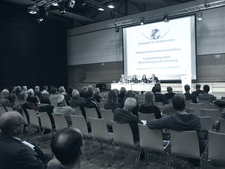Sinking of a recovery shaft (shaft 5)

![]() Drilling for new shaft 5 started
Drilling for new shaft 5 started
Parallel to planning the waste retrieval, the Federal Office for Radiation Protection (BfS) pursues the plan to sink a new shaft (shaft Asse 5). The new shaft is required for retrieval and the transport of the waste to the surface. That is also one result of the expert workshop that took place in Brunswick in January 2012. Furthermore, the entire supply of fresh air (ventilation) and the transport of materials will be improved considerably.
The first exploratory drilling for the planned new recovery shaft started on 5 June 2013.





